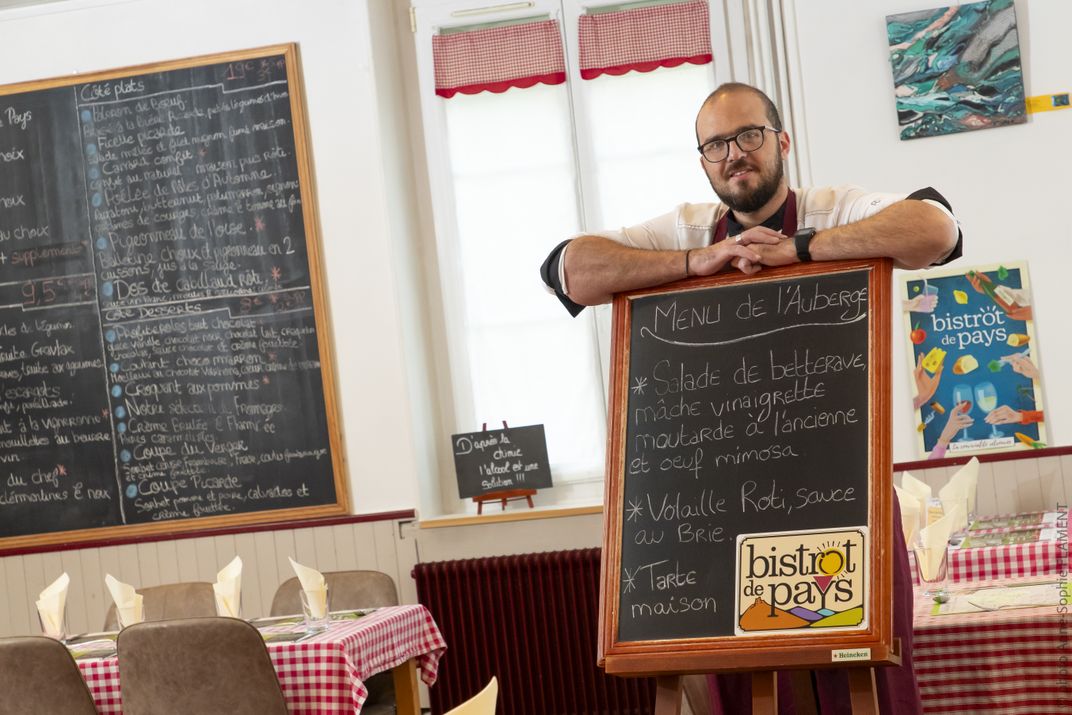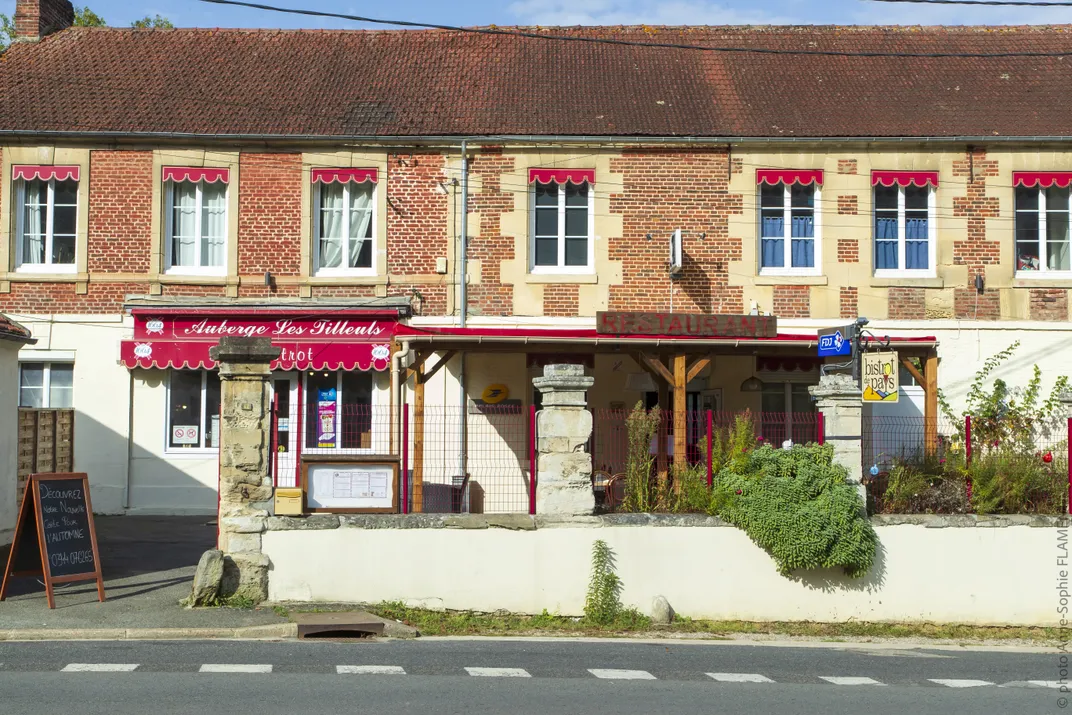In February 2009, word spread to young chef Charles-Edouard Barbier that Auberge Les Tilleuls, a small, 60-seat roadside bistro in his hometown of Heilles in northern France, was about to close. Its owner had reached retirement age—and the business was on the brink of bankruptcy. After several months on the market, a buyer hadn’t been found. If nothing changed before the start of the summer, the bistro, which is so interlaced in the fabric of the village that even Barbier can’t date its opening, would close its doors for good.
Situated on the main thoroughfare of Heilles (population 655), about a 55-mile drive north of Paris in France’s Oise department, the bistro was not only the sole restaurant left in the village but also its sole remaining business.
“When I was little, it’s where I would come after school to buy sweets,” Barbier recalls. “It was the spot where everyone in the village came together.”
Charles-Edouard Barbier, owner of Auberge Les Tilleuls in Heilles, France, works as close as possible to the seasons, serving a menu that emphasizes homemade, regional specialities, including pigeon, snails and terrines, cooked using fresh ingredients sourced from local producers. Anne-Sophie Flament
At the time, Barbier was 22 and working in a kitchen just outside La Rochelle on France’s Atlantic coast. But the minute he heard about the plight, a seed was sown. He wasted no time crunching the numbers and studying the market. By mid-March, he had secured a small loan from a bank and agreed on a sale price with the vendors. Come April, he was the official owner.
Barbier was driven by one overriding motivation: that he couldn’t allow his local bistro to close, as so many others have since the start of the 20th century. Because, for each bistro that does, the community loses more than an address to go for a meal; it loses a space for social interaction. So vital are France’s rural bistros to the survival of the villages that they serve that an application to recognize them on UNESCO’s Intangible Cultural Heritage list will soon be underway.
…
Click Here to Read the Full Original Article at Travel | smithsonianmag.com…
